
Zork is a text adventure game first released in 1977 by developers Tim Anderson, Marc Blank, Bruce Daniels, and Dave Lebling for the PDP-10 mainframe computer. The original developers and others, as the company Infocom, expanded and split the game into three titles—Zork I: The Great Underground Empire, Zork II: The Wizard of Frobozz, and Zork III: The Dungeon Master—which were released commercially for a range of personal computers beginning in 1980. In Zork, the player explores the abandoned Great Underground Empire in search of treasure. The player moves between the game's hundreds of locations and interacts with objects by typing commands in natural language that the game interprets. The program acts as a narrator, describing the player's location and the results of the player's commands. It has been described as the most famous piece of interactive fiction.
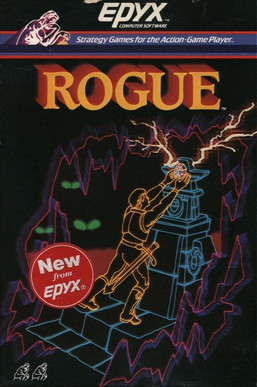
Rogue is a dungeon crawling video game by Michael Toy and Glenn Wichman with later contributions by Ken Arnold. Rogue was originally developed around 1980 for Unix-based minicomputer systems as a freely distributed executable. It was later included in the Berkeley Software Distribution 4.2 operating system (4.2BSD). Commercial ports of the game for a range of personal computers were made by Toy, Wichman, and Jon Lane under the company A.I. Design and financially supported by the Epyx software publishers. Additional ports to modern systems have been made since by other parties using the game's now-open source code.

Pool of Radiance is a role-playing video game developed and published by Strategic Simulations, Inc (SSI) in 1988. It was the first adaptation of TSR's Advanced Dungeons & Dragons (AD&D) fantasy role-playing game for home computers, becoming the first episode in a four-part series of D&D computer adventure games. The other games in the "Gold Box" series used the game engine pioneered in Pool of Radiance, as did later D&D titles such as the Neverwinter Nights online game. Pool of Radiance takes place in the Forgotten Realms fantasy setting, with the action centered in and around the port city of Phlan.

Joust is an action game developed by Williams Electronics and released in arcades in 1982. While not the first two-player cooperative video game, Joust's success and polished implementation popularized the concept. Players assume the role of knights armed with lances and mounted on large birds, who must fly around the screen and defeat enemy knights riding buzzards.

Adventure Construction Set (ACS) is a game creation system written by Stuart Smith that is used to construct tile-based graphical adventure games. ACS was published by Electronic Arts in 1984 for the Commodore 64, then for the Apple II, Amiga, and MS-DOS. Smith previously developed several commercial adventure games of a similar style, such as Ali Baba and the Forty Thieves (1981).

Sid Meier's Pirates! is a video game created by Sid Meier for the Commodore 64 and published by MicroProse in May 1987. It was the first game to include the name "Sid Meier" in its title as an effort by MicroProse to attract fans of Meier's earlier games, most of which were combat vehicle simulation video games. The game is a simulation of the life of a pirate, a privateer, or a pirate hunter in the 16th, 17th and 18th centuries. It was widely ported to other systems.

Temple of Apshai is a dungeon crawl role-playing video game developed and published by Automated Simulations in 1979. Originating on the TRS-80 and Commodore PET, it was followed by several updated versions for other computers between 1980 and 1986.

Beyond Zork is an interactive fiction computer game written by Brian Moriarty and released by Infocom in 1987. It was one of the last games in the Zork series developed by Infocom. It signified a notable departure from the standard format of Infocom's earlier games which relied purely on text and puzzle-solving: among other features, Beyond Zork incorporated a crude on-screen map, the use of character statistics and levels, and RPG combat elements.
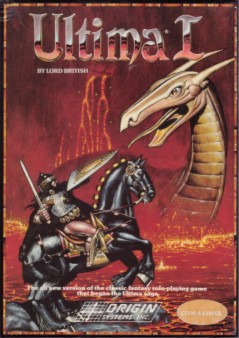
Ultima, later known as Ultima I: The First Age of Darkness or simply Ultima I, is the first game in the Ultima series of role-playing video games created by Richard Garriott, originally released for the Apple II. It was first published in the United States by California Pacific Computer Company, which registered a copyright for the game on September 2, 1980 and officially released it in June 1981. Since its release, the game has been completely re-coded and ported to many different platforms. The 1986 re-code of Ultima is the most commonly known and available version of the game.
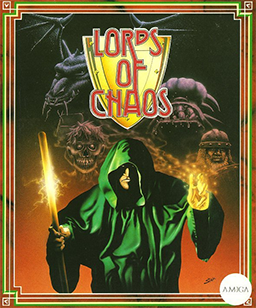
Lords of Chaos is a turn-based tactics tactical role-playing game published by Blade Software in 1990. It is the sequel to Chaos and an ancestor of the popular X-COM series of games, also written by Julian Gollop. In Lords of Chaos each player controls a wizard who can cast various magic spells. The spells have various effects, for example summoning other creatures, or damaging opposing creatures and wizards. The game can be played against a computer-controlled opponent or by up to four human players.

Autoduel is a role-playing video game published by Origin Systems for the Atari 8-bit computers, Commodore 64, Apple II, and IBM PC compatibles in 1985. It was released in 1987 for the Atari ST and in 1988 for the Amiga and Macintosh. The game is based on the Steve Jackson Games series Car Wars.

Magic Realm is a fantasy adventure board game designed by Richard Hamblen and published by Avalon Hill in 1979. Magic Realm is more complex than many wargames and is somewhat similar to a role-playing game. It can be played solitaire or with up to 16 players and game time can last 4 hours or more. The game board is a type of geomorphic mapboard constructed of large double-sided hexagon tiles, ensuring a wide variety of playing surfaces.

Wizardry VII: Crusaders of the Dark Savant is the seventh title in the Wizardry series of role-playing video games by Sir-Tech Software, Inc., preceding Wizardry 8 and succeeding Wizardry VI: Bane of the Cosmic Forge. It is also the second entry in the 'Dark Savant' trilogy. The game was published in 1992 by Sir-Tech, originally developed for DOS. In 1996 it was remade into Wizardry Gold, designed to work on Windows and Macintosh, and distributed by Interplay.

A statistic in role-playing games is a piece of data that represents a particular aspect of a fictional character. That piece of data is usually a (unitless) integer or, in some cases, a set of dice.
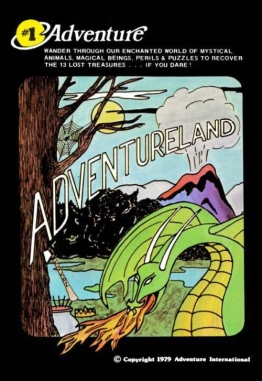
Adventureland is a text adventure video game for microcomputers, released by Scott Adams in 1978. The game has no plot but simply involves searching for thirteen lost artifacts in a fantasy setting. Its success led Adams to form Adventure International, which went on to publish thirteen similar games in the Adventure series, each in different settings.

Pirate Adventure is a text adventure video game written by Scott Adams. It was published by Adam's company, Adventure International, in 1979.

Telengard is a 1982 role-playing dungeon crawler video game developed by Daniel Lawrence and published by Avalon Hill. The player explores a dungeon, fights monsters with magic, and avoids traps in real-time without any set mission other than surviving. Lawrence first wrote the game as DND, a 1976 version of Dungeons & Dragons for the DECsystem-10 mainframe computer. He continued to develop DND at Purdue University as a hobby, rewrote the game for the Commodore PET 2001 after 1978, and ported it to Apple II+, TRS-80, and Atari 800 platforms before Avalon Hill found the game at a convention and licensed it for distribution. Its Commodore 64 release was the most popular. Reviewers noted Telengard's similarity to Dungeons and Dragons. RPG historian Shannon Appelcline noted the game as one of the first professionally produced computer role-playing games, and Gamasutra's Barton considered Telengard consequential in what he deemed "The Silver Age" of computer role-playing games preceding the golden age of the late 1980s. Some of the game's dungeon features, such as altars, fountains, teleportation cubes, and thrones, were adopted by later games such as Tunnels of Doom (1982).
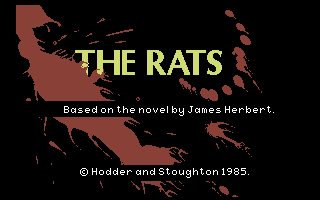
The Rats is a survival horror text adventure for the Commodore 64 and ZX Spectrum computers. It is based on the 1974 novel The Rats by James Herbert. The game was programmed by GXT, and published by Hodder & Stoughton, who were the publishers of James Herbert's book The Rats. An Amstrad CPC version was planned, but was never released.

Swords and Sorcery is a fantasy role playing video game developed and published by Personal Software Services. It was released exclusively in the United Kingdom for the ZX Spectrum in 1985 and the Amstrad CPC in 1986. The game contains elements of dungeon crawling and revolves around a customisable player-character navigating through catacombs in order to secure a large wealth of treasure, whilst simultaneously collecting seven pieces of sacred armour.

Empire of the Over-Mind is an interactive fiction game written by Gary Bedrosian and published by Avalon Hill for the Apple II, Atari 8-bit computers, and TRS-80 in 1981. A version with an enhanced display for IBM PC compatibles by Bedrosian was published in 1986.





















